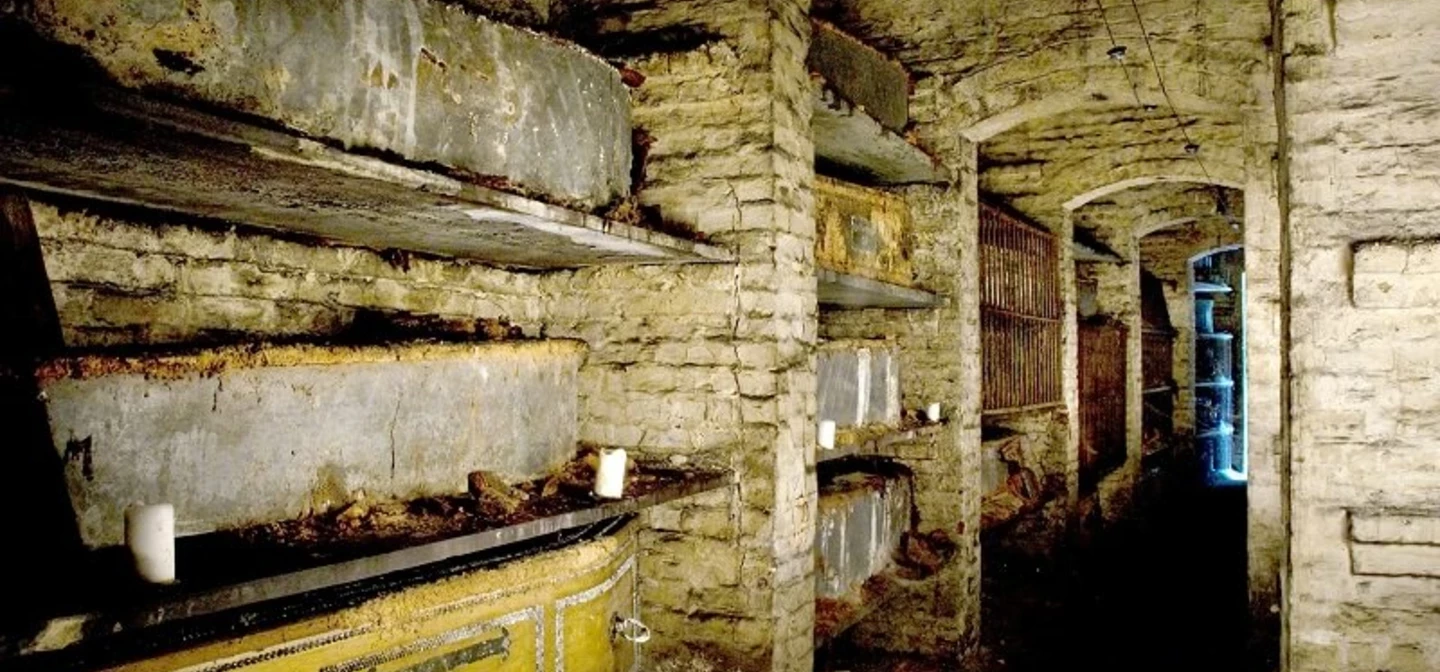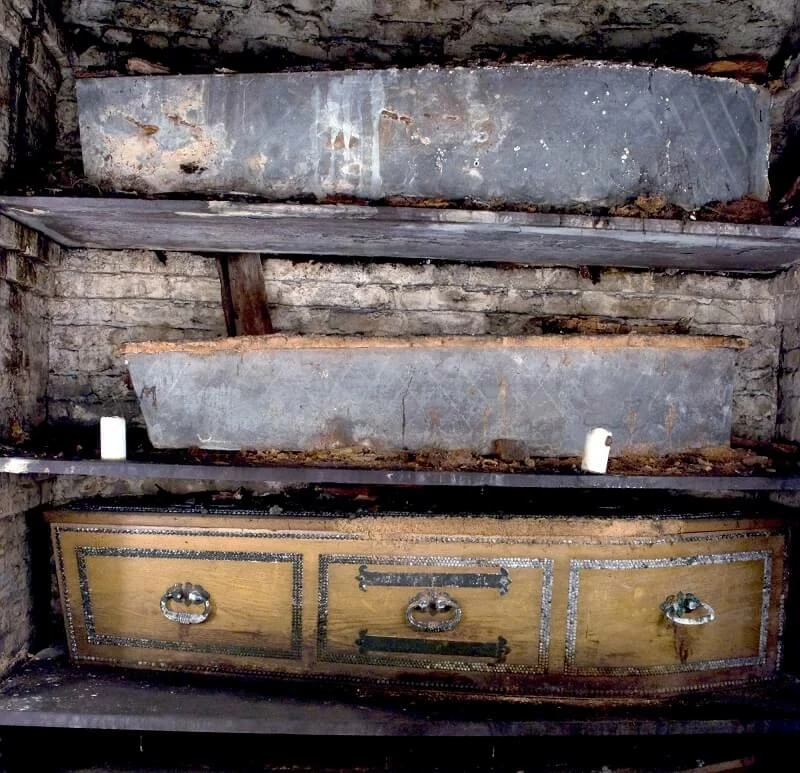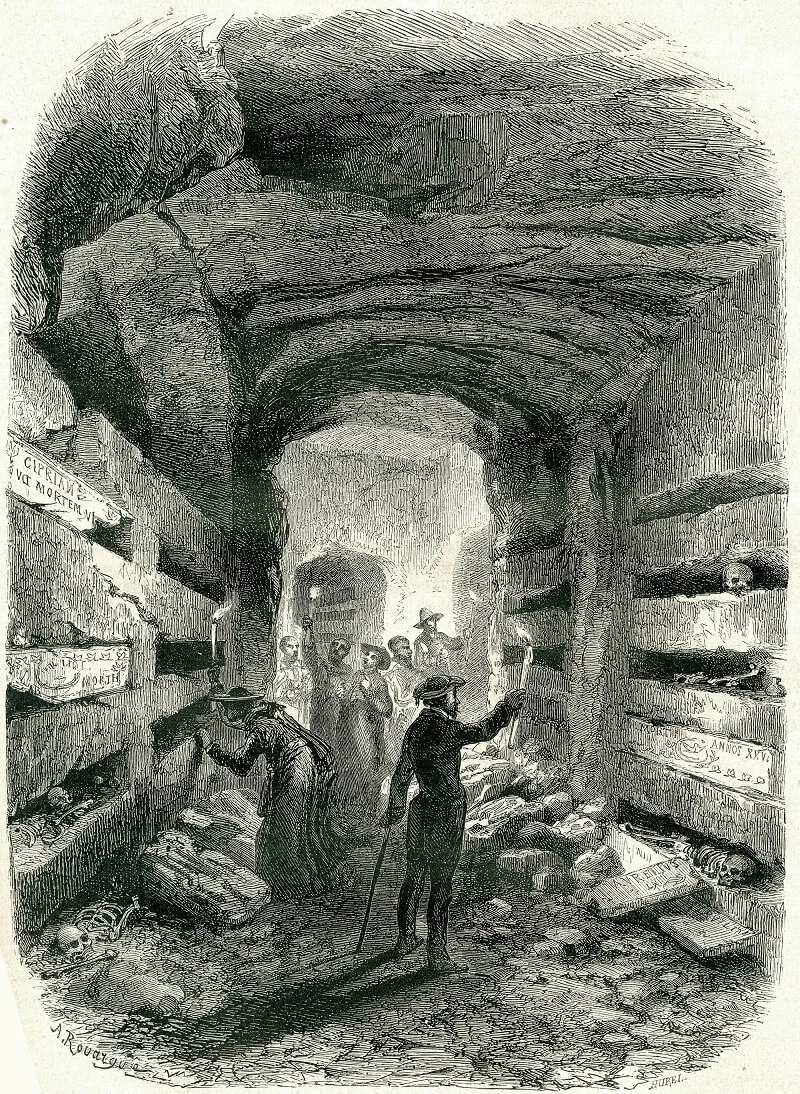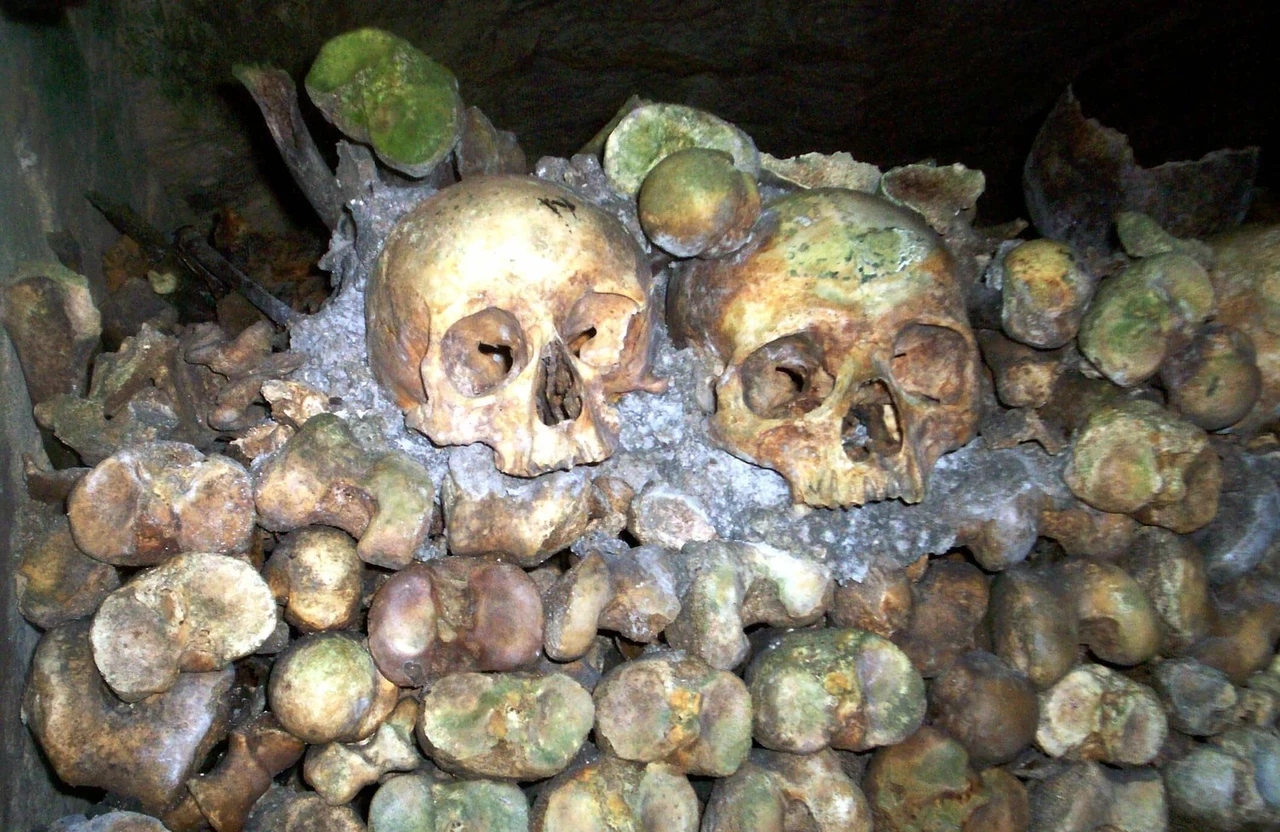
The Catacombs (1842)
Underground vaults built to hold thousands of coffins.
The catacomb gates
Brompton Cemetery offered a range of interments when it opened in 1840, to fit almost every pocket. The most expensive were large private plots along the Avenue, marked by eye-catching monuments.
A stylish alternative was an ornate coffin on a shelf in the underground catacombs. It was also a way for Victorian mourners to stay close to their loved ones after death. A catacomb burial meant they could visit the coffin regularly.

Catacomb coffins
There was room for thousands of coffins in the catacombs, built beneath the colonnades and along the western boundary. The cemetery company thought the underground tombs would attract plenty of burials, but only 500 spaces were ever sold.
It seems that people preferred the spectacular catacombs at nearby Kensal Green Cemetery, which had opened in 1833. There was also a growing interest in cremation, the burning of bodies to ashes, instead of a burial.
It was cheaper and seen as more sanitary. However, the final straw may have been the horrifying public health warnings of lead coffins exploding, due to the gases released by the decomposing bodies.

History of catacombs
The gates that mark the entrances to the cemetery’s catacombs are decorated with sinister snakes and upside-down torches.
For the Victorians, the message was clear. The torches represent death, while the snakes that curl around them are life. The circular serpent swallowing its own tail symbolises eternal life.
The catacombs might not have been a great success here in Brompton Cemetery, but people have been burying their dead in underground chambers around the world for thousands of years.
The Romans began building catacombs on the outskirts of Rome around 2,000 years ago. The ancient tradition of cremation had gone out of fashion, so for centuries they buried their dead in graves within the underground tunnels.

Paris Catacombs
The bones of around six million people lie in the Paris Catacombs, a 200-mile network of caves, tunnels and old quarries beneath the city. The name is misleading because the bodies weren’t originally buried there.
When Paris’s churchyards and cemeteries began to overflow in the 18th century, the human remains were dug up and transferred to the underground tunnels.
